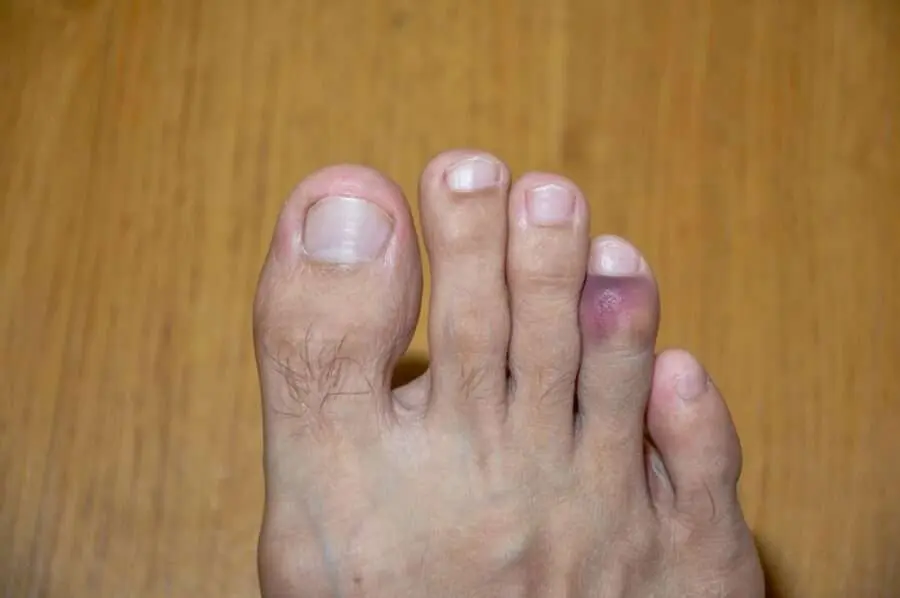
While ankle sprains and dislocations are often better known, toes can also be affected. If you’ve ever forcefully bumped your toe or engage in a sport that involves sudden changes of direction, there’s a chance you may have experienced one of these injuries. While they can be very painful, they may resolve on their own. However, be cautious about the severity of the case: it’s likely that medical attention is needed if your toes are hindering your daily activities. Let’s explore the differences between a toe sprain and a toe dislocation, and how to treat them.”
How to distinguish the symptoms of sprains from those of a dislocation?
In the case of a mild sprain, the joint is painful, but the patient can generally still move their toe. Swelling may occur in the hours following the injury, accompanied by bruising. However, if it is a severe sprain, a cracking sensation may be felt in the joint, and swelling appears within minutes. Leaning on the injured limb becomes even more difficult and uncomfortable.
Dislocation presents similar symptoms, but its notable difference from a toe sprain is the intensity of the pain it causes. In this case, the toe is extremely sensitive to touch, stiff, and joint deformation and swelling are highly visible. The skin of the toe may appear stretched and bluish, even purplish. The injury can also lead to a loss of sensation or tingling in the toe. It is recommended to promptly schedule an appointment with a podiatrist for an examination and a treatment plan.
How to treat a toe sprain or dislocation?
At the first symptoms of the injury, whether it’s a sprain or dislocation, it is recommended to give yourself some rest to prevent further damage. Applying ice can help relieve the pain caused by inflammation. Regarding this, it is advised to do so in intervals of about fifteen minutes, approximately every two hours on average. You can also elevate your foot to reduce swelling, and if you feel capable, immobilize the toe with a splint. If these precautions are not sufficient for relief, you can also take over-the-counter pain relievers, as advised by your pharmacist.
However, if the pain persists, podiatric or emergency medical consultation is essential. The healthcare professional conducts a visual examination and, if necessary, may use an X-ray to assess the extent of the damage. They can then manipulate the joint to realign it. But if complications are identified, surgery under local anesthesia may be suggested. It is worth noting, however, that in the majority of cases, toe dislocations and sprains tend to resolve on their own when the doctor’s instructions are followed correctly.
Maintaining an active lifestyle and healthy feet.
With some precautions, it is possible to maintain an active lifestyle and keep your feet healthy; and your podiatrist is even there to help you with that. Whether you engage in walking, high-level sports, or running, this healthcare professional can guide you on warming up properly and choosing the right footwear. A routine podiatric assessment can help quickly detect abnormalities, treat minor injuries before they worsen, and provide answers to your questions. Check the list of PiedRéseau member clinics to schedule your next appointment.